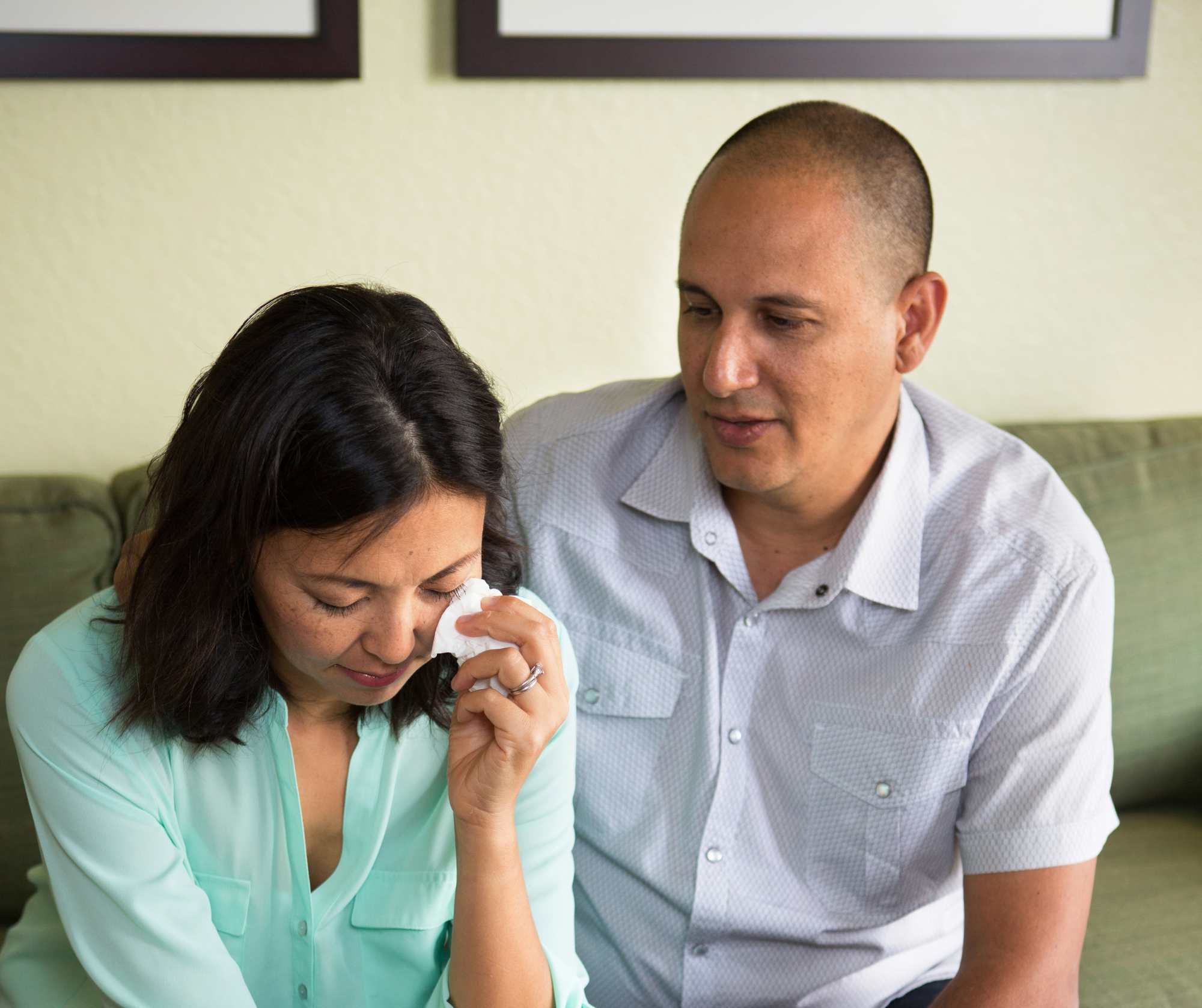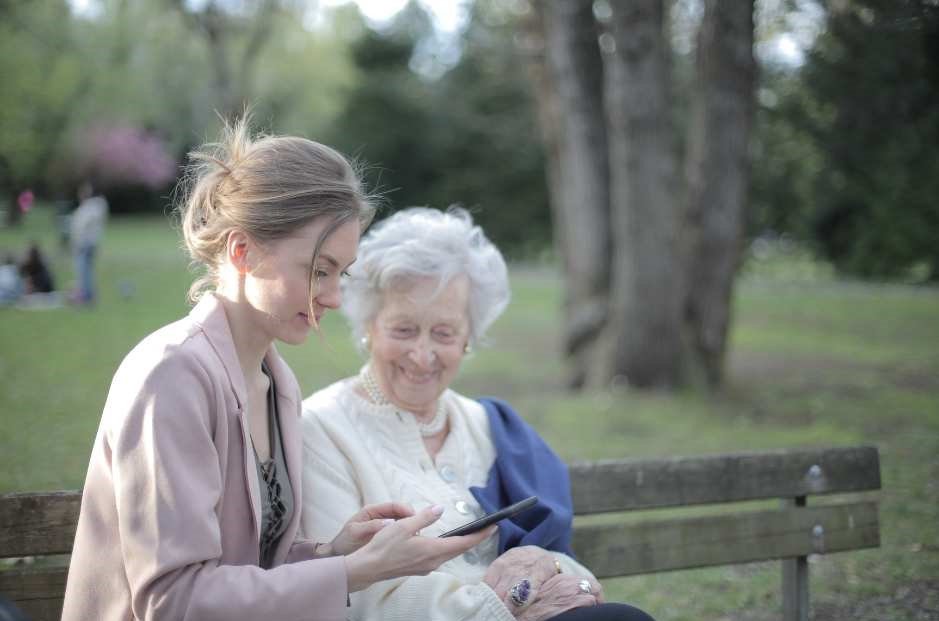Speech Therapy for Parkinson's Disease: Improving Speech and Voice
Parkinson's disease (PD) is a neurological condition affecting millions of people worldwide. While it's commonly associated with motor symptoms such as tremors and stiffness, this disease can also impact an individual's ability to speak and communicate effectively. Changes in speech, cognition, and vocal quality are often distressing for both patients and their loved ones, but there is hope. Speech therapy for Parkinson's disease is a valuable resource that can significantly improve speech and voice function, enhance communication, and improve the overall quality of life for those living with this condition.
In this comprehensive guide, we will explore the importance of speech treatment for Parkinson's disease, the specific speech challenges faced by individuals with Parkinson's, the role of a speech language pathologist (SLP), and effective therapeutic strategies to address these challenges.
Key Takeaways:
Parkinson's disease affects speech and voice: In addition to motor symptoms affecting body movements, PD can lead to communication difficulties. Speech difficulties may include hypophonia, monotone speech, imprecise articulation, and impaired prosody.
The importance of speech therapy: Speech-language pathologists (SLPs) play a crucial role in evaluating and treating speech and voice challenges associated with PD.
Benefits of speech therapy: Speech therapy can improve speech clarity, voice quality, and overall communication effectiveness for individuals with PD.
Lee Silverman Voice Treatment (LSVT) and SpeakOut! programs: These specialized programs offer intensive vocal training to address speech and voice challenges in PD.
Holistic approach: Maintaining physical and mental well-being, including exercise, nutrition, and social connections, is essential for managing PD and improving communication.
Understanding Parkinson's Disease
The Impact of Communication Difficulties on Quality of Life
Speech Challenges in Parkinson's Disease
Speech Evaluation for Parkinson's Disease
The Benefits of Treatment for Parkinson's Disease
Vocal Exercises: Lee Silverman Voice Treatment (LSVT) and SpeakOut! Programs
Tips for Living Well with Parkinson's Disease
Understanding Parkinson's Disease
Parkinson's disease is a progressive neurological disorder that primarily affects movement. It occurs when there is a decrease in the brain's dopamine production, a neurotransmitter that plays a crucial role in controlling movement and coordination. As dopamine levels decline, individuals with PD experience a range of motor symptoms, including:
Tremors: Involuntary shaking of the hands, arms, legs, or other parts of the body.
Bradykinesia: Slowness of movement, making even simple tasks more time-consuming.
Rigidity: Stiffness and inflexibility of the limbs and joints.
Postural Instability: Difficulty maintaining balance and an increased risk of falls.
While these motor symptoms are well-recognized hallmarks of Parkinson's disease, the condition can also affect non-motor functions, including cognition, mood, and communication.
Changes in speech and voice quality are also symptoms that can significantly impact daily life in those living with PD.
The Impact of Communication Difficulties on Quality of Life
Effective communication is fundamental to human connection and quality of life. Spoken and written communication is our primary means of conveying thoughts, emotions, and intentions. For individuals with Parkinson's disease, changes in speech and a hoarse voice can lead to communication challenges, social isolation, and reduced self-confidence. Therefore, addressing these issues is imperative to preserve a high quality of life.
Communication and Connecting with Others
Spoken communication connects us with others, enabling us to express our emotions, share experiences, and forge deep connections. However, individuals contending with PD may experience changes to their speech and voice, impeding their ability to effectively convey thoughts and feelings, leading to frustration and social isolation.
Social Interaction
Effective verbal communication remains pivotal for active participation in social gatherings and maintaining relationships. Sadly, individuals with PD may withdraw from such engagements due to speech difficulties, which can significantly impact their overall well-being.
Self-Confidence
Alterations in speech and voice can dent one's self-confidence. Struggles in being understood or self-consciousness about speech can lead to low self-esteem.
Speech Challenges in Parkinson's Disease
Individuals with Parkinson's disease often experience a range of communication challenges, including:
Hypophonia: Hypophonia is also known as soft speech. It is characterized by a reduction in vocal loudness. Patients may speak in a very quiet voice or at a volume that is difficult for others to hear.
Monotone Speech: PD can reduce vocal pitch variation, resulting in a monotone or flat speech pattern. This can make speech sound less engaging and expressive.
Imprecise Articulation: Articulation refers to the clarity of speech sounds. Parkinson's disease can lead to imprecise articulation, making speech difficult to understand.
Impaired Prosody: Prosody is defined as the rhythm, intonation, and stress patterns of speech. PD can lead to abnormalities in prosody, affecting the melody and flow of speech.
Dysarthria: Dysarthria is a motor speech disorder that can affect individuals with Parkinson's. It results in slurred, slow, and difficult-to-understand speech due to muscle weakness and coordination issues.
Vocal Tremor: Some individuals with PD may experience tremors in the vocal cords, leading to shaky or quivering speech.
Body Language and Facial Expressions: People with Parkinson's disease may also struggle to convey emotions and intentions through body language and your facial expression. Motor symptoms of Parkinson's, such as bradykinesia (slowness of movement) and rigidity, can affect one's ability to use gestures and facial expressions effectively, which may hinder non-verbal communication and further impact social interactions and emotional expression.
Speech Evaluation for Parkinson's Disease
Speech-language pathologists are crucial in evaluating and treating speech, language, cognition, and voice challenges in individuals with PD.
A speech evaluation for PD is a comprehensive process aimed at evaluating and addressing speech and voice difficulties associated with the condition. Here's an overview of what is involved in a speech evaluation:
Case History and Interview: The assessment typically begins with a thorough interview to gather information about the individual's medical history, Parkinson's disease diagnosis, symptom progression, and current speech problems. The speech therapist will also inquire about the person's goals and concerns regarding their speech and voice.
Physical Examination: A physical examination of the speech and voice mechanism may be conducted. It includes an assessment of facial muscle strength, range of motion in the tongue and lips, and other physical factors that can affect speech production.
Speech and Voice Evaluation:
Speech Production: The speech-language pathologist will assess the individual's ability to articulate sounds and words clearly. They may evaluate factors such as speech rate, articulatory precision, and fluency.
Voice Quality: An assessment of voice quality involves evaluating pitch, loudness, resonance, and breath support. Individuals with Parkinson's disease often experience voice changes, such as reduced loudness and monotone speech.
Respiratory Function: The speech therapist may assess the individual's respiratory function, as breathing plays a significant role in voice production. Reduced breath support can contribute to speech difficulties in Parkinson's disease.
Perceptual Assessment: Speech pathologists use perceptual evaluation tools to assess speech and voice quality subjectively. Rating scales that look at factors like intelligibility, voice clarity, and prosody (intonation and rhythm of speech) are often used.
Instrumental Assessment: Advanced technology, such as acoustic analysis or videostroboscopy, may be used to measure speech and voice parameters objectively. These tools can help identify specific areas of impairment and track progress over time.
Functional Assessment: The speech therapist may assess communication in real-life situations. Conversational interactions, reading passages, or other tasks that mimic daily communication demands may be used.
Cognitive and Language Assessment: Parkinson's disease can also affect cognitive and language functions. The speech therapist may assess language comprehension, expression, and cognitive-communication skills to determine if these factors contribute to speech problems.
Patient and Family Input: Input from the individual with Parkinson's disease and their family is crucial. They can provide valuable insights into communication challenges encountered in daily life.
Goal Setting: Based on the assessment findings and the individual's goals, the speech therapist will work with the patient to establish personalized therapy goals and a treatment plan. These goals may focus on improving speech clarity, voice quality, or communication strategies.
Treatment Planning: Following the assessment, the speech therapist will design a customized treatment plan that may include speech and voice exercises, strategies for improving communication, and recommendations for assistive communication devices if needed.
Regular Monitoring: Speech therapy for Parkinson's disease is an ongoing process. Regular follow-up assessments and therapy sessions are essential to monitor progress, adjust treatment strategies, and provide ongoing support.
The Benefits of Treatment for Parkinson's Disease
Participating in speech therapy for PD is a significant step toward improving communication. However, seeking consultation with an Ear, Nose, and Throat doctor (ENT) before initiating voice therapy is advisable. ENT doctors can identify structural abnormalities, vocal fold lesions, or other underlying issues requiring specific medical attention or treatment. Collaborating with an ENT specialist ensures that your vocal health is meticulously assessed and helps your clinician create an optimal treatment plan tailored to your unique needs.
Once your ENT and your speech pathologist have conducted an evaluation, the next crucial step is implementing a tailored speech treatment plan. Treatment strategies are designed to address the specific speech and voice difficulties identified during the assessment.
Here's an overview of what is typically involved in speech treatment for PD:
Speech Therapy Exercises: Speech therapy can be designed to address the various speech disorders that occur in PD. These exercises may include tongue and lip exercises designed to improve speech intelligibility.
Voice Exercises: To address the vocal changes that can occur in PD, therapists may prescribe exercises to work on pitch control and loudness modulation. These exercises aim to restore a more natural and expressive voice.
Communication Strategies: Patients are taught effective communication strategies to compensate for speech difficulties. These strategies may involve slowing down speech, using pauses for emphasis, and practicing techniques to enhance intelligibility.
Assistive Communication Devices: In some cases, individuals with PD may benefit from assistive communication devices. This may include augmentative and alternative communication devices, such as communication boards, symbol-based communication devices, or even high-tech speech-generating devices. The TYY telephone relay system is another tool that can serve as an invaluable compensatory strategy for individuals with PD. The TYY telephone relay system allows individuals with PD to type out just the words during a call. At the same time, a speaker on the other end of the line listens to the text, facilitating smoother and more accessible conversations for those with speech difficulties.
Breathing and Respiratory Training: As breath support plays a crucial role in voice production, therapists may provide exercises to enhance respiratory function. These exercises can help individuals with PD generate stronger breath support for speech.
Perceptual Training: Patients may undergo perceptual training to enhance their ability to self-monitor and adjust their speech and voice production to help individuals with Parkinson's disease make real-time improvements in their communication.
Cognitive-Communication Therapy: If cognitive and language difficulties were identified during the evaluation, therapists may incorporate cognitive-communication therapy into the treatment plan. Therapy can involve exercises to improve language comprehension, memory, and attention during communication.
Regular Progress Monitoring: Treatment progress is regularly monitored to track improvements and adjust strategies as needed. Follow-up assessments help ensure that the treatment plan remains effective and relevant to the individual's evolving needs.
Patient and Family Involvement: Encouraging active involvement of the individual with PD and their family is crucial throughout the treatment process. Patient and family input helps fine-tune therapy goals and strategies based on real-life communication challenges.
Continued Support: Speech therapy for PD is often long-term, as many communication skills require consistent practice and ongoing adjustments to effectively manage the condition's progressive nature. Continued support and periodic follow-up sessions are essential to maintain progress and address any new communication issues that may arise.
Vocal Exercises: Lee Silverman Voice Treatment (LSVT) and SpeakOut! Programs
One of the primary objectives of voice therapy for individuals with PD is to improve the quality and clarity of their speech. Vocal exercises are a cornerstone of speech treatment interventions. Two notable programs commonly used in managing Parkinson's-related communication challenges are the Lee Silverman Voice Treatment (LSVT loud) and the SpeakOut! Program.
1. Lee Silverman Voice Treatment (LSVT)
The LSVT Loud program, a subsidiary of LSVT Global, is a well-established and evidence-based approach specifically designed to address the speech and voice challenges associated with Parkinson's disease. Key components of the LSVT Loud program include:
Intensive Treatment: LSVT typically involves intensive one-on-one therapy sessions over a four-week period. The concentrated schedule allows individuals to immerse themselves in the therapy, maximizing its effectiveness with the overall goal of achieving to speak louder voice. LSVT is provided by LSVT Loud clinicians certified to deliver the program.
Targeted Exercises: LSVT emphasizes exercises that focus on increasing vocal loudness. Targeted activities are crucial because individuals with PD often experience reduced vocal volume, leading to communication challenges. The "Think Loud" approach encourages individuals to speak with increased effort and volume.
Sensory Awareness Training: LSVT helps individuals with Parkinson's disease recalibrate their perception of their own voice. Patients learn to monitor and control their vocal loudness and pitch through exercises and feedback.
Carryover Exercises: A significant aspect of LSVT is teaching patients to carry over their improved vocal habits into everyday communication, ensuring that the benefits of therapy extend beyond the treatment sessions.
Individualized Approach: LSVT therapy is tailored to each individual's unique needs and goals, allowing for a personalized treatment plan.
2. SpeakOut! Program
The SpeakOut! Program is another widely recognized voice therapy program designed to address voice and speech challenges associated with Parkinson's disease. This program shares some similarities with LSVT but also incorporates distinctive features:
Voice Exercises: Like LSVT, SpeakOut! includes exercises to improve vocal loudness, clarity, and pitch range. It utilizes various exercises and strategies to target these areas effectively.
Daily Practice: SpeakOut! encourages individuals to practice their exercises daily to reinforce vocal improvements and maintain progress over time.
Group Sessions: Some SpeakOut! programs offer group therapy sessions with a speech therapist, which can provide additional support and motivation for individuals by fostering a sense of community among participants.
Incorporating "Intent": SpeakOut! places an emphasis on speaking with "intent," which means consciously focusing on clear and deliberate speech. This approach can help individuals overcome the soft and monotone speech often associated with PD.
Functional Communication: The SpeakOut! Program strongly emphasizes improving functional communication skills, enabling individuals to navigate real-life communication situations better and overcome their difficulty speaking.
Both the LSVT and SpeakOut! programs have demonstrated effectiveness in improving speech and voice outcomes for individuals with PD. The choice between the two may depend on individual preferences, therapist recommendations, and program availability. In either case, these programs offer valuable tools and exercises that can significantly enhance the vocal abilities and overall communication of individuals living with PD.
Tips for Living Well with Parkinson's Disease
Maintaining awareness of the essential physical and mental well-being aspects, including exercise, nutrition, and the importance of staying engaged with support groups for a holistic approach to managing this condition, is also helpful.
Exercise: Incorporate regular physical activity into your daily routine. Exercise enhances overall physical well-being and can also benefit speech and voice.
Nutrition: Maintain a balanced and nutritious diet. Proper nutrition supports overall health and energy levels, which are essential for sustaining the physical stamina required for effective communication.
Maintain Social Connections: Active engagement in social activities and hobbies can be highly beneficial. Participation in social interactions provides opportunities to practice communication skills and fosters emotional well-being.
Support Groups: Consider joining support groups specifically tailored to individuals living with PD. These groups provide a supportive community where you can connect with others who face similar challenges. Sharing experiences, insights, and coping strategies can be highly valuable. Support groups often provide a safe space to practice communication and receive constructive feedback from peers who understand your unique journey.
Frequently Asked Questions About Parkinson's Speech Therapy
1. Can speech therapy help with Parkinson's?
Yes, speech therapy can significantly help with Parkinson's disease. Many people with Parkinson's experience speech difficulties, such as reduced volume, monotone speech, and difficulty articulating words. Speech therapy can address these issues and improve overall communication, allowing patients to speak more clearly and loudly.
2. What are the goals for Parkinson's speech therapy?
The goals of Parkinson's speech therapy include:
Improving speech clarity and volume: Helping patients speak louder and more clearly.
Increasing vocal variety: Enhancing pitch and intonation to make speech more natural and expressive.
Teaching communication strategies: Providing techniques to compensate for speech difficulties.
Addressing swallowing issues: Many people with Parkinson's also experience dysphagia (swallowing problems), which can be treated by an SLP who specializes in swallowing disorders.
3. What is the best treatment for Parkinson's disease?
There is no single "best" treatment for Parkinson's disease, as it varies depending on individual symptoms and progression. However, a comprehensive approach typically involves:
Medication: To manage motor symptoms and other aspects of the disease.
Speech therapy: To address communication difficulties.
Physical therapy: To improve mobility and balance.
Occupational therapy: To assist with daily living activities.
Deep brain stimulation (DBS): A surgical procedure that can help manage some symptoms.
Lifestyle factors: Exercise, nutrition, and stress management can also play important roles.
How Can Connected Speech Pathology Help
At Connected Speech Pathology, we can help with your communication challenges related to Parkinson's disease. Our dedicated team of speech therapists specializes in working with people with Parkinson's disease to improve communication skills and enhance your overall quality of life.
Through personalized assessment and treatment plans, we aim to address the specific speech and language difficulties you may be facing. Whether improving your articulation, voice quality, or prosody, our evidence-based therapy techniques are designed to empower you to communicate more effectively.
We are committed to helping you regain confidence in your natural speech, foster better connections with loved ones, and participate more fully in social interactions. Contact us today to start your journey toward improved communication and quality of life.
Summary
Parkinson's disease has unique challenges, including speech, language, voice, and cognitive changes. Speech treatment for PD offers improved communication, increased confidence, and enhanced well-being. Speech-language pathologists are dedicated professionals who play a pivotal role in helping individuals with PD regain control of their voices and lives.
If you or a loved one is living with PD and experiencing communication challenges, don't hesitate to seek the support of a speech-language pathologist. With the right therapy, strategies, and support, individuals with PD can continue communicating effectively and living fulfilling lives.
About the Author
Allison Geller is a communication coach, speech-language pathologist, and founder of Connected Speech Pathology, an international online practice providing professional communication coaching and speech therapy for children, teens, and adults. With more than two decades of experience, she has worked in medical and educational settings, published research on aphasia, and leads a team of specialists helping clients improve skills in public speaking, vocal presence, accent clarity, articulation, language, fluency, and interpersonal communication.











